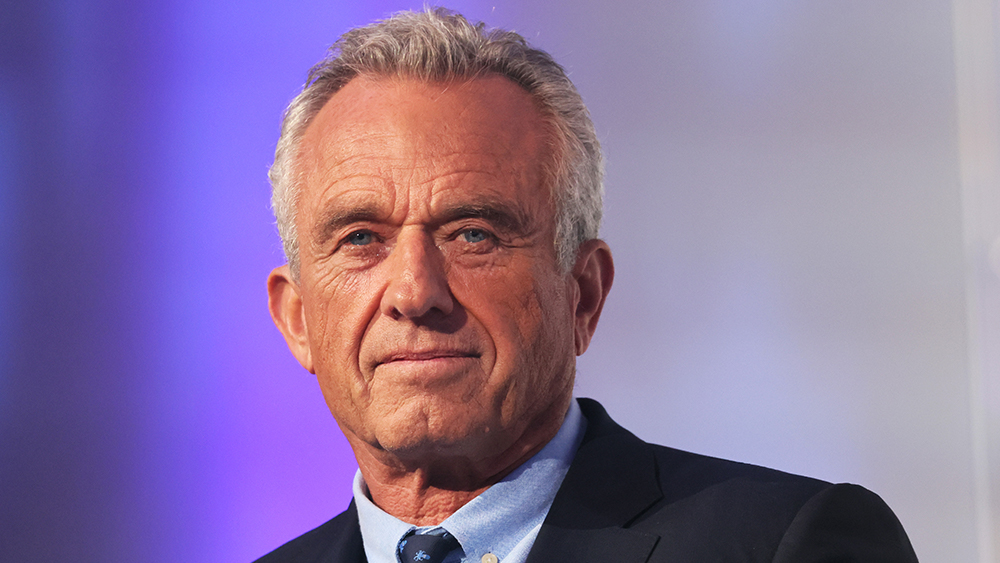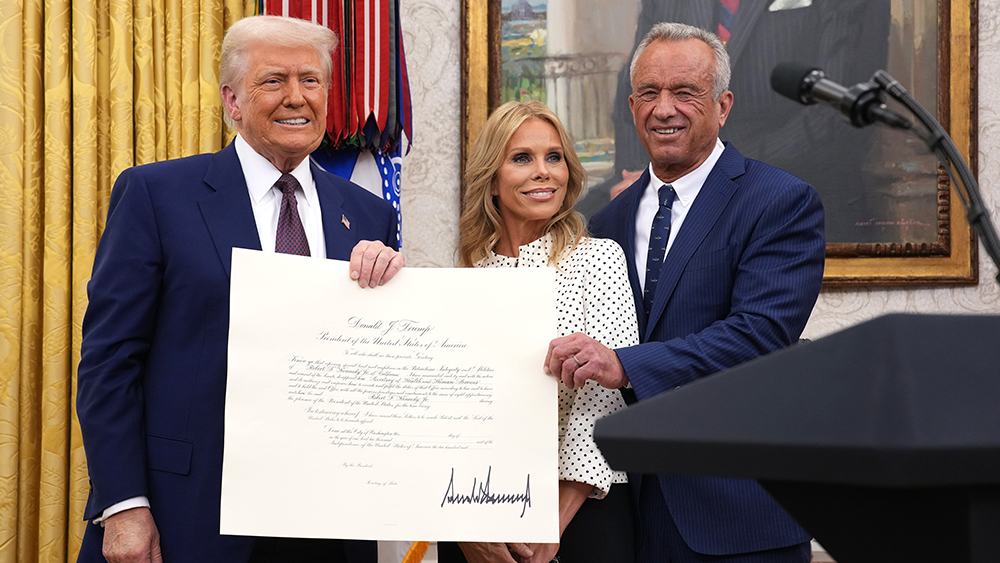UPS slashes 20,000 jobs, shuts facilities in $3.5B cost-cutting move after Amazon split
By isabelle // 2025-04-29
Tweet
Share
Copy

- UPS plans to cut 20,000 jobs and close 73 facilities by mid-2025 as part of a cost-saving strategy amid economic uncertainty and reduced Amazon deliveries.
- The company is shifting away from lower-margin Amazon shipments (12% of revenue) to focus on more profitable sectors like healthcare and international deliveries.
- UPS expects $3.5 billion in savings by 2025, aiming to boost operating margins despite economic pressures from tariffs and slowing trade demand.
- First-quarter revenue ($21.5B) beat expectations, but UPS declined to update its full-year outlook due to unpredictable market conditions.
- Most layoffs will impact non-union management as UPS restructures its workforce and network, attempting to emerge "stronger and more nimble."
Strategic pivot from Amazon
The job cuts come after UPS's January decision to halve the number of Amazon deliveries it handles. While Amazon deliveries constitute approximately 12% of UPS's revenue, the company determined that profit margins from these shipments were too small and is now refocusing on more lucrative markets such as healthcare and international deliveries. During UPS's fourth-quarter earnings call in January, CEO Carol Tomé explained the rationale: "Amazon is our largest customer but it's not our most profitable customer. Its margin is very dilutive to the U.S. domestic business." Amazon maintains that it has a "strong working relationship" with UPS. Kelly Nantel, an Amazon spokesperson, noted that Amazon had actually "offered to increase UPS' volumes before the delivery company made the decision to reduce its Amazon shipments." Nantel added, "Due to their operational needs, UPS requested a reduction in volume and we certainly respect their decision. We'll continue to partner with them and many other carriers to serve our customers."Economic uncertainty and cost savings
Tomé cited the uncertain economic environment as another factor in the company's restructuring: "The world has not been faced with such enormous potential impacts to trade in more than 100 years," she stated during Tuesday's earnings call. The company expects to save $3.5 billion in 2025 through these cost-cutting measures. "These actions will enable us to expand our U.S. Domestic operating margin and increase profitability," CFO Brian Dykes explained during the earnings call. Economic headwinds include extensive tariffs imposed by the Trump administration that have slowed trade and led companies to reduce costs in anticipation of reduced demand. For delivery companies like UPS, this slowdown likely means decreased demand for shipping services between businesses. UPS is keeping customers informed about tariff developments on its website and has introduced a tool called UPS Global Checkout that shows online shoppers the upfront costs for duties, fees and taxes.Financial performance and outlook
Despite these challenges, UPS reported better-than-expected first-quarter results on Tuesday, with revenue of $21.5 billion, exceeding Wall Street expectations of $21.05 billion. The company posted an adjusted profit per share of $1.49, ahead of analysts' expectations of $1.38. "The actions we are taking to reconfigure our network and reduce cost across our business could not be timelier," said CEO Tomé. However, UPS declined to provide any updates to its full-year outlook due to economic uncertainty. UPS had previously announced its expectation for 2025 revenue of approximately $89 billion. Of UPS's 490,000 employees, around 330,000 are represented by the Teamsters union. The company is consolidating its facilities and workforce as it prepares for reduced Amazon shipments. UPS may identify additional buildings for closure as it continues to review its network. "The macro environment may be uncertain, but with our actions, we will emerge as an even stronger, more nimble UPS," Tomé stated. Last year, UPS delivered an average of 22.4 million parcels per day, or 5.7 billion for the entire year. Whether the company can maintain its dominance while shedding jobs and facilities remains to be seen. Sources for this article include: DailyMail.co.uk CBSNews.com CNBC.com APNews.comTweet
Share
Copy
Tagged Under:
collapse Donald Trump economy market crash debt collapse Amazon risk money supply layoffs bubble supply chain tariffs trade wars debt bomb UPS shipping economic riot finance riot
You Might Also Like
Putin announces three-day ceasefire in Ukraine for Victory Day, raising skepticism and hope
By Belle Carter // Share
Moderna faces suspension over ethical violations in COVID-19 vaccine trials
By Laura Harris // Share
Grassroots health revolution gains momentum as MAHA movement expands beyond RFK Jr.
By Willow Tohi // Share
China halts exports to U.S.: Empty shelves expected within weeks, warns Health Ranger Mike Adams
By Finn Heartley // Share
Recent News
Putin announces three-day ceasefire in Ukraine for Victory Day, raising skepticism and hope
By bellecarter // Share
Google and Meta face scrutiny over alleged censorship of Catholic university ads
By lauraharris // Share









